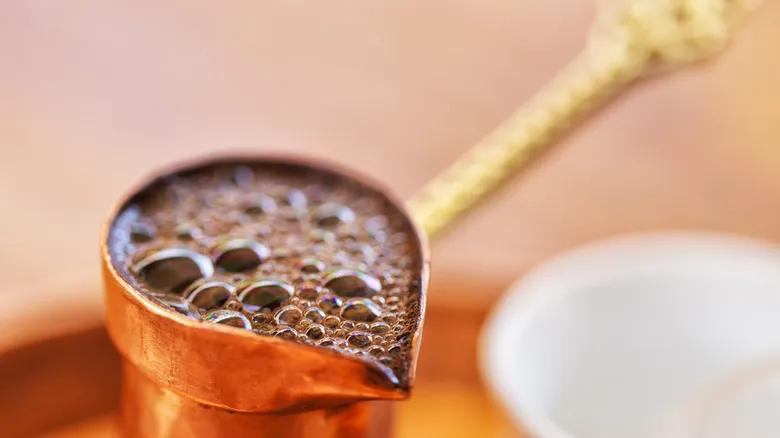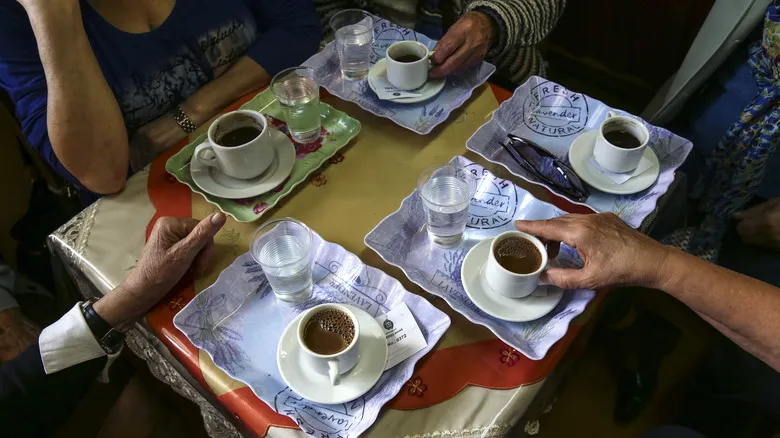The coffee is heated on low for optimal flavor and creating foam

To prepare a cup of Greek coffee, you'll need a briki, high-quality coffee (ideally sourced from Greece), finely ground into a powder, and a bit of care. If you have demitasse cups available, a common method is to measure 2 to 3 ounces of water directly in the cup before adding it to the pot. For the best foam, start with cold water, then add the coffee grounds by the teaspoon, along with any desired sugar. It's advisable to stir the mixture just enough to combine the ingredients, then let it sit as it heats slowly.
The distinctive froth of Greek coffee is achieved by bringing it to a gentle boil. Avoid allowing it to reach a vigorous boil, as this will cause the thick, bubbly layer on top to dissipate. Instead, when you see the first bubbles forming, it's customary to take the pot off the heat to prevent it from boiling over while the coffee brews into a rich, velvety liquid. Afterward, return the briki to the heat and let it bubble and foam again before removing it to serve. This method helps maintain the foam at the top of the pot, ensuring it transfers to the coffee cup. If you're using a larger briki to make multiple servings, be sure to spoon some foam into each cup before pouring in the coffee to evenly distribute the frothy layer.
How to enjoy Greek coffee

Greek coffee is typically served simply, accompanied by a glass of cold water. On special occasions, it may also be paired with cookies like koulourakia (Greek butter cookies), which are perfect for dipping. The coffee is generally served black (sketos) or with sugar, and it is less common to find it with milk compared to other coffee styles. For a cup that balances sweetness and boldness, Greek coffee can be prepared "metrios," which includes 1 teaspoon of sugar for every teaspoon of coffee. For a sweeter option, you can add an extra teaspoon of sugar (glykos) or use 3 teaspoons of sugar for every 2 teaspoons of coffee (variglycos).
Since Greek coffee is gently boiled to enhance its flavor and create foam, it is served with the grounds still in the cup. Therefore, it's important to wait for the grounds to settle before taking your first sip. This is usually not an issue, as locals in Greece often savor their coffee and socialize for an hour or two, sometimes well into the evening. While there are many types of coffee, enjoying a cup in good company is often the best way to experience it — a sentiment well understood by the people of Greece. If you have the opportunity to try Greek coffee or prepare it yourself in a briki, embrace the traditional approach and indulge in your coffee slowly and luxuriously, just as it was intended.
Recommended

What Exactly Is The Difference Between Coffee And Espresso?

Do You Really Need A Whiskey Decanter?

What Proof Is Jack Daniel's Whiskey?

The Fruity British Cocktail Made For Ginger Ale Lovers
Next up

